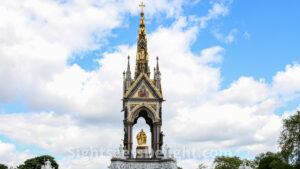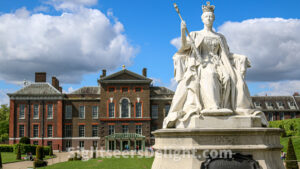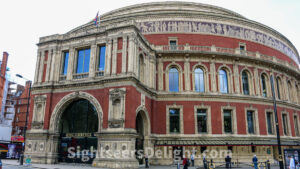The Albert Memorial, located north of the Royal Albert Hall in Kensington Gardens, London, was constructed in honor of Prince Albert, Queen Victoria’s dear husband, who passed away in 1861. Sir George Gilbert Scott designed the ornate pavilion, which stands at a height of 176 feet (54 m) and resembles a Gothic ciborium over the high altar of a church. Inside the pavilion, there is a south-facing statue of Prince Albert. It took more than ten years to construct and was funded by public subscription, costing £120,000 (roughly £10 million in 2010). The Queen inaugurated the memorial in July 1872, and the statue of Albert was ceremonially “seated” in 1876, and it was classified as Grade I in 1970.
The Kensington Palace royal residence has been a residence of the British Royal Family since the 17th century. It is the official London residence of the Duke and Duchess of Cambridge and other members of the Royal Family. The State Rooms of Kensington Palace are open to the public and display paintings and objects from the Royal Collection.
The Royal Albert Hall is a renowned concert hall in northern South Kensington, London. It is considered one of the UK’s most precious and recognizable buildings. The hall is managed by a registered charity that doesn’t receive government funding and is held in trust for the nation. It has a seating capacity of 5,272 people.



